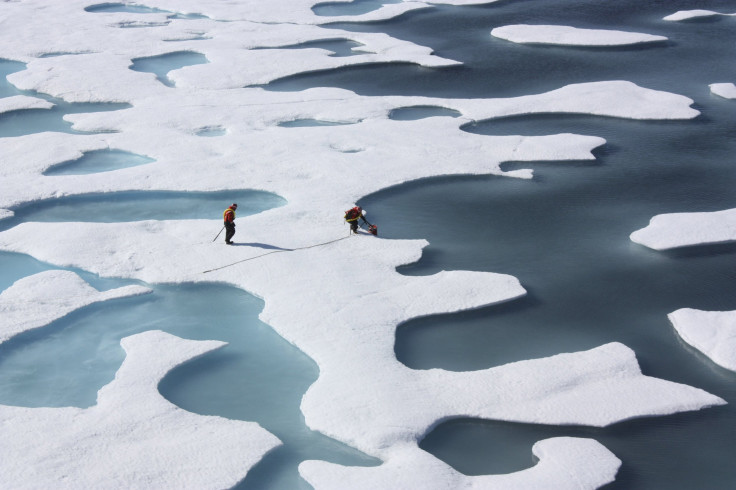Arctic Sea Ice 50% Thicker Than Last Year, Scientists ‘Didn’t Expect’ Growth In Wake Of 2012 Shrinkage

The dominant narrative in any climate change discussion is often the shrinking of the polar ice caps. According to this account, polar ice will disappear in the next few decades, leaving polar bears scrambling for the few remaining glaciers to hunker down on. But according to new analysis from the European Space Agency (ESA) the Arctic sea ice actually got thicker over the past year, particularly around the Canadian archipelago and North Greenland.
The ESA announced in a statement on Monday that measurements from Cryosat, the ESA’s polar monitoring platform, showed that Arctic sea ice average thickness grew about 20 percent, or around 30 cm, from 2012 to 2013. Data suggested there was almost 9,000 cubic kilometers (1,400 cubic miles) of ice at the end of the 2013 melt season. Around the same time last year, there was 6,000 cubic kilometers (1,400 cubic miles) of ice, for a net increase of nearly 3,000 cubic kilometers (1,400 cubic miles) compared with 2012.
Cryosat measures sea-ice thickness across the entire Arctic Ocean, and allows scientists to track changes in thickness as the ice moves around.
"We didn't expect the greater ice extent left at the end of the summer melt to be reflected in the volume,” Rachel Tilling from the U.K.'s Nerc Centre for Polar Observation and Modelling, said in a statement. "But it has been. And the reason is related to the amount of multi-year ice in the Arctic."
This is not to say that Earth is off the hook from the effects of global warming. It’s important to note that last year’s summer melt was the most dramatic on record, suggesting that we’re still on course for an ice-free Arctic during the summer months. In 2012 sea ice in the Arctic shrank an unprecedented 18 percent, outdoing the previous record set in 2007.
“Along with the extent of the sea ice, its thickness, or volume, has also significantly decreased in the last two decades,” The Guardian reported in September 2012. “While this is harder to measure accurately, it is believed to have decreased around 40% since 1979.”
So how do scientists account for the 50 percent increase in thickness in 2013? According to the ESA, roughly 90 percent of the growth is due to the increase of multiyear ice -- the ice that survives more than one summer without melting. In previous summers, some of the ice migrated to Alaska and Siberia, where it melted. But in 2013, because of a change in wind patterns, the ice that would have normally taken a hike stayed put.
"Although the recovery of Arctic sea ice is certainly welcome news, it has to be considered against the backdrop of changes that have occurred over the last few decades," Professor Andrew Shepherd from University College London, a co-author of the study, told The BBC.
Shepherd added in a press release: "It's estimated that there were around 20,000 cu km of Arctic sea ice each October in the early 1980s, and so today's minimum still ranks among the lowest of the past 30 years.”
According to the BBC, while the area of the polar ice is easier to ascertain, scientists believe that ice thickness is the best metric by which to judge the health of our polar ice caps. That’s why the data collected by Cryosat is so important to understanding climate change.
© Copyright IBTimes 2024. All rights reserved.






















